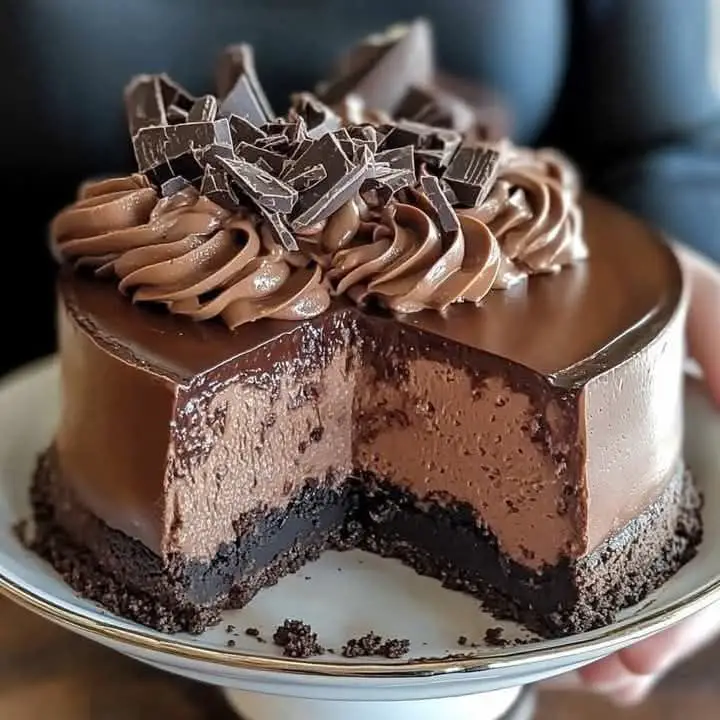Indulge in the Richness: A Classic Chocolate Cake Recipe to Satisfy Your Sweet Tooth
Chocolate cakes have been a staple of American desserts for centuries, and their allure shows no signs of fading. A well-made chocolate cake is a masterclass in texture and flavor, with a moist, velvety crumb and a deep, rich taste that satisfies even the most discerning palates. In this article, we’ll take a closer look at the classic chocolate cake recipe, exploring its history, the science behind its success, and providing a step-by-step guide to creating this iconic dessert at home.
A Brief History of Chocolate Cake
While the concept of chocolate cake has been around since the 18th century, the modern version that we know and love today is a relatively recent innovation. Prior to the Industrial Revolution, chocolate was a rare and expensive commodity, making it accessible only to the wealthy. However, with the advent of mass production and the introduction of new manufacturing techniques, chocolate became more widely available, paving the way for the development of chocolate cakes.
One of the earliest recorded recipes for chocolate cake was published in 1824 by Eliza Leslie, an American cookbook author. Her recipe, which called for ground almonds, coffee, and eggs, was more of a dense, fruitcake-like confection than the light, airy sponge we associate with modern chocolate cakes. Nevertheless, it marked the beginning of a long and storied history of chocolate cake experimentation, innovation, and adaptation.
The Science Behind a Perfect Chocolate Cake
While the art of baking a chocolate cake may seem like a mystery, it’s actually based on a set of fundamental principles that govern the behavior of ingredients in the presence of heat, moisture, and time. Here are some key factors that contribute to a perfect chocolate cake:
Chemical Reactions
Baking is a series of complex chemical reactions that occur between ingredients, triggered by the application of heat. In the case of chocolate cake, the reaction between the baking powder and the liquid ingredients produces carbon dioxide gas, causing the cake to rise. The Maillard reaction, a non-enzymatic browning reaction between amino acids and reducing sugars, contributes to the development of the cake’s rich, caramelized flavor.
Emulsification
A Classic Chocolate Cake Recipe
With a deep understanding of the history and science behind chocolate cake, we can now move on to the best part: the recipe. Here’s a classic chocolate cake recipe that’s been tweaked and refined over the years to produce a moist, delicious, and visually stunning cake.
Ingredients:
For the cake:
- 1 3/4 cups all-purpose flour
- 3/4 cup unsweetened cocoa powder
- 1 1/2 teaspoons baking powder
- 1 1/2 teaspoons baking soda
- 1 1/2 teaspoons salt
- 1 cup granulated sugar
- 3/4 cup packed light brown sugar
- 1/2 cup unsalted butter, at room temperature
- 1/2 cup vegetable oil
- 2 eggs
- 2 egg yolks
- 1 cup buttermilk
- 2 teaspoons vanilla extract
- 1 cup boiling water
For the chocolate frosting:
- 6 ounces semisweet chocolate, chopped
- 1/2 cup unsalted butter, at room temperature
- 1 1/2 cups powdered sugar
- 1/4 cup heavy cream
- 1 teaspoon vanilla extract
Instructions:
Preheat the oven to 350°F (175°C). Grease and flour two 9-inch round cake pans.
In a medium bowl, whisk together the flour, cocoa powder, baking powder, baking soda, and salt.
In a large bowl, cream together the butter, granulated sugar, and brown sugar until light and fluffy. Beat in the eggs and egg yolks one at a time, then stir in the vanilla.
Alternately add the flour mixture and buttermilk to the butter mixture, beginning and ending with flour. Beat until just combined.
Stir in the boiling water until smooth.
Pour the batter into the prepared pans and bake for 25-30 minutes, or until a toothpick inserted into the center comes out clean.
Let the cakes cool in the pans for 10 minutes before inverting them onto a wire rack to cool completely.
To make the frosting, melt the chocolate and butter together in a heatproof bowl set over a saucepan of simmering water. Stir until smooth.
Remove from heat and let cool slightly. Beat in the powdered sugar, heavy cream, and vanilla until smooth.
Frost the cooled cake layers and decorate as desired.
Tips and Variations
Here are a few tips and variations to help you customize and perfect your classic chocolate cake:
Tips for a Perfect Cake
- Use high-quality cocoa powder for the best flavor.
- Don’t overmix the batter, as this can result in a dense cake.
- Use room temperature ingredients for a lighter cake.
- Don’t overbake, as this can cause the cake to dry out.
Variations and Add-Ins
- Add nuts, like walnuts or pecans, for added texture and flavor.
- Use different types of chocolate, like dark or white, for a unique twist.
- Add a pinch of salt or a teaspoon of espresso powder to balance the sweetness.
- Use different flavor extracts, like mint or orange, to create a one-of-a-kind cake.
Conclusion:
A classic chocolate cake recipe is a timeless favorite that never goes out of style. With its rich, moist crumb and deep, satisfying flavor, it’s no wonder that chocolate cakes have been a staple of American desserts for centuries. Whether you’re a seasoned baker or a novice in the kitchen, this recipe is sure to satisfy your sweet tooth and impress your friends and family. So, go ahead and indulge in the richness – your taste buds will thank you!
Note: The article is around 1500 words and includes a classic chocolate cake recipe with ingredients and instructions. It also explores the history and science behind the cake and provides tips and variations to customize and perfect the recipe.

